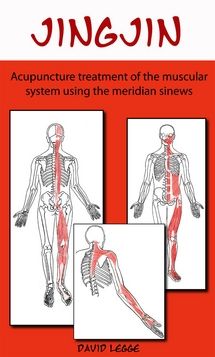We use cookies to make your experience better. To comply with the new e-Privacy directive, we need to ask for your consent to set the cookies. Learn more.
Jing Jin: Acupuncture treatment of the muscular system using the meridian sinews
£44.96
£49.95
Save
£4.99
VAT Exempt
Out of stock
SKU
9780957739215
The jingjin are a network of secondary meridians that form part of the meridian system of Chinese acupuncture. The word "jin" is usually translated as sinew or muscle and does include the notion of both muscle and tendon.Variously translated as sinew channels, meridian sinews, muscle channel, muscle conduits, and tendino-muscular meridians, the jingjin theory has been included in the core traditional literature up to the present time. However, little diagnostic or clinical application is evident. This present volume takes a detailed look at the published material on the jingjin and explores the possible intentions of the earliest authors in light of contemporary knowledge. the original jingjin pathways are examined and a proposal for clarification of those pathways is detailed. Clinical applications based on the author's extensive practice are presented.
Jing Jin provides a new perspective on the infrequently-used and poorly-understood sinew channels. Legge follows an approach familiar to anyone who has read his previous book Close to the Bone, presenting clear, concise and practical descriptions of the musculoskeletal conditions seen commonly in clinical practice. This time, however, he contextualises the sinew channels in terms of both Tom Myers’ ‘anatomy trains’ and Travell and Simons’ work on trigger points. It is both an obvious and interesting application and there is much to applaud. His text provides clear descriptions of the anatomical pathways sourced from the Ling Shu, as well as solid Western pathology - including clear guidelines as to what he feels the sinew channels will and will not address and trigger points located along the relevant sinew channels. It is clearly a product of his background as an osteopath and acupuncturist, and for this alone it will be helpful in terms of facilitating communication and interplay between acupuncture, osteopathy and chiropractic.
More contentious is Legge’s modern reinterpretation of the sinew channels. Many of us have a sense of vagueness about them as channels: they sort of follow the other channels, and sort of don't, and there are no proper points on them. Legge’s thesis is that these ‘anatomy trains’ were observed by the Chinese and contextualised as another level of the channel system, after which cultural issues regarding dissection prevented a more accurate description of their trajectories. His reevaluation makes some changes to the pathways, adding some new branches and abandoning some old ones (notably at the Jueyin level). In terms of therapeutic application such an innovative approach makes sense (one presumes Legge is not writing based purely on speculation). Whether it is still the sinew channels that Legge is working with is another matter.
The sinew channels are more than just part of the musculoskeletal system; they are the conduits for wei qi and part of the body’s defensive mechanism. They are where we meet the world. To focus solely on their musculoskeletal aspect alone may be interesting, but to reevaluate them solely on this basis seems questionable. At no point does Legge attempt to widen the discussion beyond this basis. The wei level is mentioned once, the six divisions just a couple of times, and Legge presents little sense of the gradation of the level of the sinews beyond the relative depth of muscle groups. Given the limited awareness of the totality of this subsystem, the narrowness of this book’s perspective may be of greater limitation than a simple matter of focus. That said, it is good to see these channels discussed at all, and Legge’s muskuloskeletally-oriented presentation may be of significant practical value in the clinic.
Despite these criticisms, the title of this book promises an explanation of the 'acupuncture treatment of the muscular system using the meridian sinews', and this is exactly what it delivers. Legge’s proposed changes of the physiological ‘map’ are easily absorbed and explained by the wider theory presented, and I personally look forward to trying out this new approach.
Calum Thomson
| Author | David Legge |
|---|---|
| Publication Date | 1 Jan 1970 |
| Publisher | Sydney College Press |
| Number of Pages | 170 |
| Book Format | Softback |
Write Your Own Review
* Orders shipped outside of Europe are eligible for VAT relief and will not be charged VAT.


